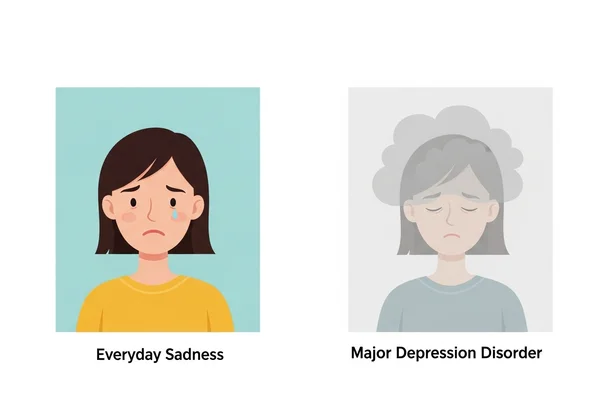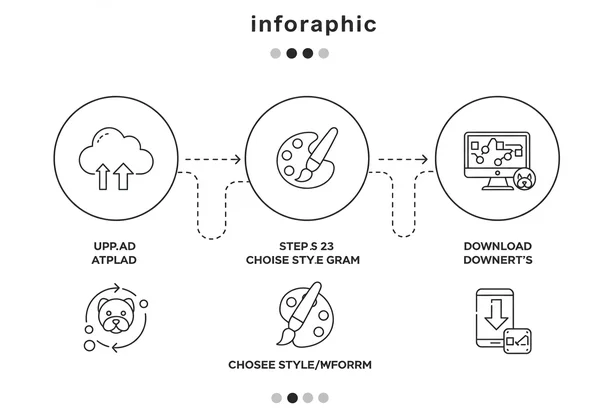PHQ9 を読み解く:うつ病性障害の種類
PHQ9 のスコアを知ることは、自己認識と理解のための重要な瞬間となり得ます。それはあなたの心の健康のスナップショットを提供しますが、その数字自体を超えて、phq9 スコアは何を意味するのか と疑問に思うかもしれません。あなたのスコアを最終的な答えとしてではなく、会話の始まりとして考えてください。このガイドでは、PHQ9 スクリーニングが示す可能性のある一般的なうつ病性障害の種類を探り、ご自身の メンタルヘルス の状態をより深く理解するのに役立ちます。
ご自身の心の状態を理解することは、幸福への第一歩です。始める準備ができていれば、無料ツール で 安心して 評価を受けることができます。
PHQ9 スコアが示すうつ病の種類
Patient Health Questionnaire-9 (PHQ9) は、世界中の専門家が使用する強力なスクリーニングツールです。これは診断を提供するものではありませんが、過去 2 週間に経験した抑うつ症状の重症度を効果的に測定します。回答のパターンは、精神的な課題 の性質について貴重な手がかりを提供することができます。
うつ病性障害のスペクトルを理解する
「うつ病」が単一の症状ではなく、むしろ 多様な状態の スペクトルであることを理解することが重要です。それは、独自の症状、期間、引き金を持つ様々な障害を含みます。これらの状態は総称して うつ病性障害 と呼ばれます。これらは、単一の重篤なエピソードから、慢性的な 気分の落ち込み まで多岐にわたります。PHQ9 は、ご自身の症状がこのスペクトルのどこに位置するかを特定するのに役立ち、さらなる探求のための出発点を提供します。

PHQ9 が潜在的な抑うつ症状をどのように特定するか
PHQ9 の 9 つの質問はそれぞれ、精神疾患の診断・統計マニュアル(DSM-5)で定義されているうつ病の主要な症状基準に対応しています。興味の喪失(アヘドニア)、睡眠や食欲の変化、気力の低下、無価値感に関する質問は、いくつかの 抑うつ症状 の診断基準を直接的に反映しています。スコアが高いほど、これらの症状がより頻繁に現れ、日常生活により大きな影響を与えている可能性が高いことを示唆しています。
大うつ病性障害(MDD):一般的な兆候と PHQ9 との関連
ほとんどの人が臨床的うつ病と考えるとき、それはしばしば 大うつ病性障害 を指します。MDD は、持続的な気分の落ち込み、興味や喜びの喪失、その他、日常生活に著しく支障をきたす可能性のある感情的および身体的な問題によって特徴づけられます。PHQ9 で中程度から重度のスコアが出た場合、MDD と一致する症状が存在することを示すことが多く、医療専門家 との相談が必要です。
PHQ9 に反映される MDD の中核症状
PHQ9 は MDD のスクリーニングのために 効果的に 設計されています。気分の落ち込みとアヘドニアをカバーする最初の 2 つの質問は、中核となる症状です。潜在的な MDD エピソードの基準を満たすには、これらのうち少なくとも 1 つがほとんどの時間存在している必要があります。他の 7 つの質問は、睡眠障害、疲労、食欲の変化、罪悪感、集中力の問題、自傷行為の考えなどの関連する兆候を評価します。これらの関連性を認識することで、PHQ9 の結果 をより深く理解することができます。
MDD を日常の悲しみと区別する
誰もが時折悲しみを感じます。しかし、日常的な悲しみ と MDD の主な違いは、期間、強度、および影響にあります。悲しみは、特定の出来事に対する一時的な反応であることが多いですが、MDD は、少なくとも 2 週間続く広範な気分の落ち込みを伴い、仕事、睡眠、食事、そして人生を楽しむ能力を妨げます。PHQ9 はこの影響を定量化するのに役立ち、区別をより明確にします。

持続性抑うつ障害(PDD):慢性の気分の落ち込み
すべてのうつ病が強烈で 一時的 であるわけではありません。持続性抑うつ障害 (PDD) は、気分の落ち込みが少なくとも 2 年間続く慢性的なうつ病の一種です。症状は特定の時点では MDD のものよりも軽度かもしれませんが、その長期にわたる性質は 非常に大きな負担となり、日常生活を妨げることがあります。
気分変調性障害の持続的な性質
PDD はかつて 気分変調性障害 と呼ばれていました。これはその持続的で 根強い 性質を捉えた用語です。PDD のある個人は、自分自身が人生を通して「悲しい」または「憂鬱だ」と感じてきたと表現するかもしれません。彼らは十分に機能できるかもしれませんが、一貫して喜びを感じず、悲観的で、倦怠感 を感じます。症状が非常に継続的であるため、PDD のある人の中には、治療可能な状態であることにさえ気づかない人もいます。定期的な PHQ9 スクリーニングで軽度から中程度のスコアが継続的に出るパターンは、PDD を示唆する可能性があります。ご自身の状況を確認するために、ベースラインテスト を受けてみてください。
慢性的な抑うつ症状の PHQ9 スコア
PHQ9 は過去 2 週間について尋ねますが、慢性的な状態に関する洞察も提供することができます。PDD のある人は、繰り返しの評価で一貫して軽度から中程度の範囲(5~14)のスコアを出すかもしれません。彼らは一度に重度の MDD のスクリーニング陽性となるほどの十分な症状を持っていないかもしれませんが、スコアの持続性は、専門的な注意を払うべき 持続的な困難 を示しています。
知っておくべきその他の重要なうつ病性障害
うつ病性障害の世界は多様です。PHQ9 は、他の特定の状態の一部である可能性のある症状を特定するのにも役立ち、それぞれが理解と治療に対して個別のアプローチを必要とします。
周産期うつ病:マタニティブルーズを超えて
妊娠中または出産後に発生する 周産期うつ病 は、「マタニティブルーズ」よりも強烈で長続きします。これは、出産したばかりの親 が自分自身や赤ちゃんを世話することを困難にする可能性のある、著しい悲しみ、不安、疲労感を伴います。
季節性情動障害(SAD):季節が気分を変えるとき
一部の人にとって、抑うつ症状は季節的なパターンに従います。季節性情動障害 (SAD) は、季節の変化に関連するうつ病の一種であり、多くの場合、秋に始まり冬の間続きます。気力の低下 や過眠などの症状が一般的です。
月経前不快気分障害(PMDD):月ごとの気分の変動
月経前不快気分障害 (PMDD) は、月経前症候群 (PMS) の重篤な形態です。これは、生理の 1、2 週間前に、極端な気分の変動、易怒性、うつ病などの 心身の機能を著しく低下させる 感情的および身体的症状を引き起こします。
非定型特徴を伴ううつ病:非典型的な症状
このうつ病のサブタイプは、典型的な症状とは異なる特定の症状を伴います。これらには、肯定的な出来事に対する一時的な気分の高揚、食欲増進または体重増加、過眠、腕や脚の 鉛のような重さ などが含まれます。
重要な免責事項と専門家の助けを求めること

心の健康と向き合うこと は旅であり、PHQ9 のようなツールは貴重なガイドです。しかし、本当に必要なサポートを確実に得るためには、それらを正しく使用し、その限界を理解することが不可欠です。
PHQ9 スコアが診断ではない理由
明確に言えば、PHQ9 スコアはスクリーニングツールであり、医学的診断ではありません。正式な診断には、資格を有する専門家 による評価が必要です。この評価では、あなたの症状、病歴、生活状況など、質問票では捉えられない詳細が考慮されます。PHQ9 スコアは、医師やセラピストと 会話を始める ためのツールとして使用してください。
精神保健の専門家に相談すべき時
次のような場合は、専門家と話すことを検討してください。
- PHQ9 スコアが中程度から重度の範囲(10 以上)である場合。
- スコアに関わらず、症状が 精神的な苦痛を引き起こしたり、日常生活に支障をきたしている場合。
- 症状が数週間以上続いている場合。
- 自傷行為の考えがある場合(質問 9)。その場合は、危機ホットラインまたは緊急サービスに連絡して、直ちに助けを求めてください。
感情の健康を理解するための次のステップ
あなたの PHQ9 スコアは、非常に重要な情報です。それはあなたの感情を肯定し、次のステップを踏み出す力を与えることができます。異なる うつ病の種類 を理解することは、あなたの経験が人間の感情と健康のよく理解されたスペクトルの一部であることを認識するのに役立つ、極めて重要な文脈を提供します。この知識は、専門家と話すことの見通しをより恐れにくく、より生産的なものにすることができます。
この メンタルヘルスチェック は、セルフケアにおける重要な一歩です ことを忘れないでください。ここで得た洞察を活用して、幸福への旅を続けてください。明確で プライバシーが保護された 出発点を得るために、今日 無料の PHQ9 スクリーニング を受けることを検討してください。
PHQ9 とうつ病性障害に関するよくある質問
PHQ9 とは何ですか?うつ病とどのように関連していますか?
PHQ9 は、抑うつ症状の重症度を測定するために使用される 9 項目からなるスクリーニングツールです。うつ病性障害の診断に使用される基準に直接対応しており、潜在的な 心の健康上の問題 を特定するための信頼できる第一歩となります。
PHQ9 スコアで実際にうつ病性障害と診断されますか?
いいえ、診断できません。PHQ9 は効果的な スクリーニング ツールですが、診断ツールではありません。資格を有する医療専門家 のみが、徹底的な臨床評価の後、正確な診断を提供できます。あなたのスコアは、医師と共有するためのリソースとして最適です。
さまざまなうつ病の種類において、高い PHQ9 スコアは何を意味しますか?
高いスコア(通常 15 以上)は、あなたが顕著な抑うつ症状を経験していることを示唆しています。これらの症状は、大うつ病性障害(MDD)と一致することが多いですが、他の状態の一部である可能性もあります。これは、専門家との相談が強く推奨される 重要な指標 となります。
PHQ9 は様々なうつ病の状態を特定する上でどのくらい正確ですか?
PHQ9 は臨床的に検証されており、うつ病、特に MDD のスクリーニングにおいて非常に信頼性が高いとされています。それ自体で異なるサブタイプを区別することはできませんが、ほとんどのうつ病性障害に共通する中核症状を正確に 検出します。
PHQ9 スコアとこれらの障害の種類に基づいて、いつ専門家の助けを求めるべきですか?
スコアが 10 以上の場合、症状が持続的で 精神的な苦痛を感じている 場合、または自傷行為の考えがある場合は、専門家の助けを求めるべきです。最初の PHQ9 スコア を得た後、異なる障害の種類について学ぶことは、専門家にあなたの経験をより正確に説明するのに役立ちます。